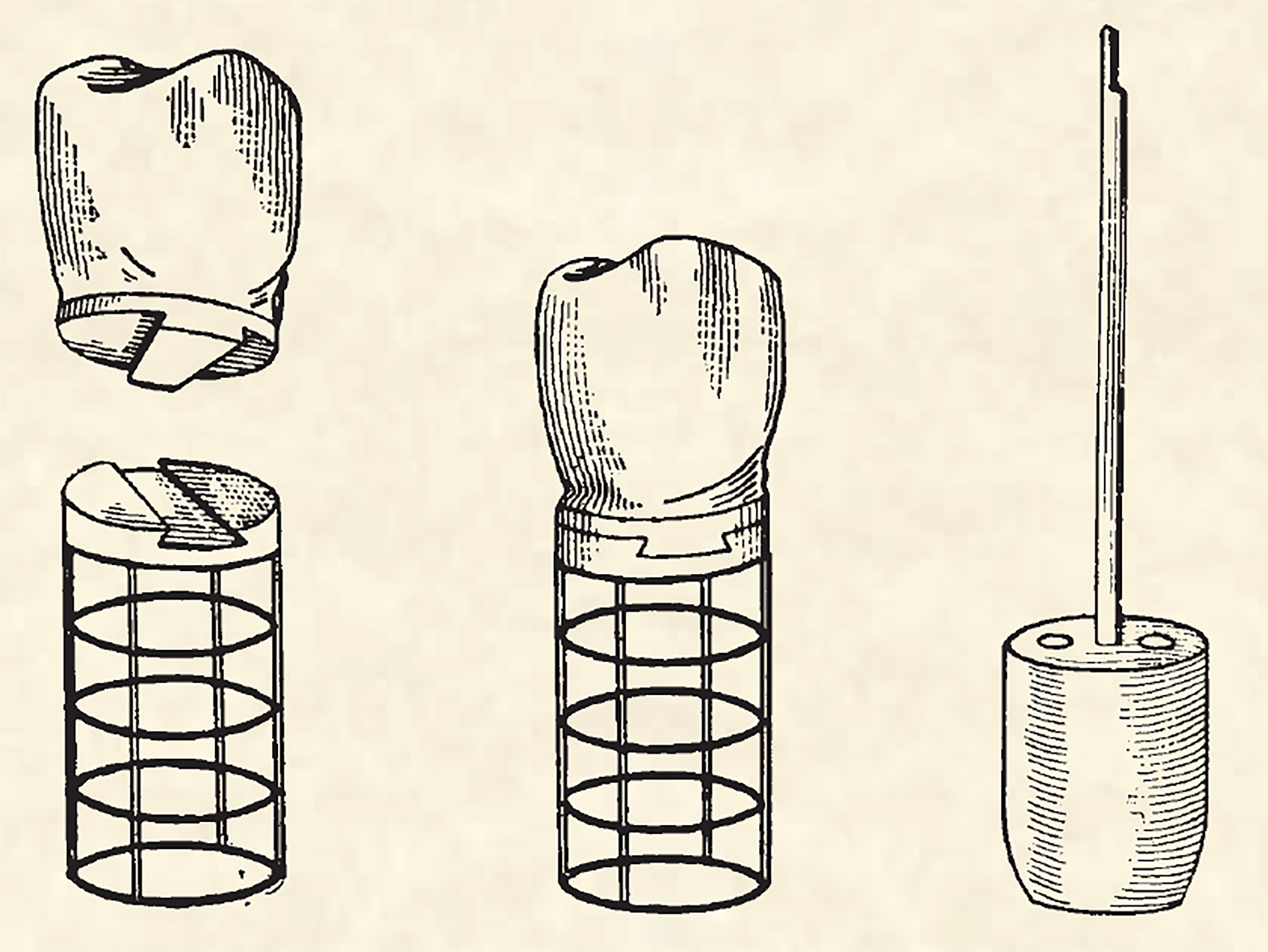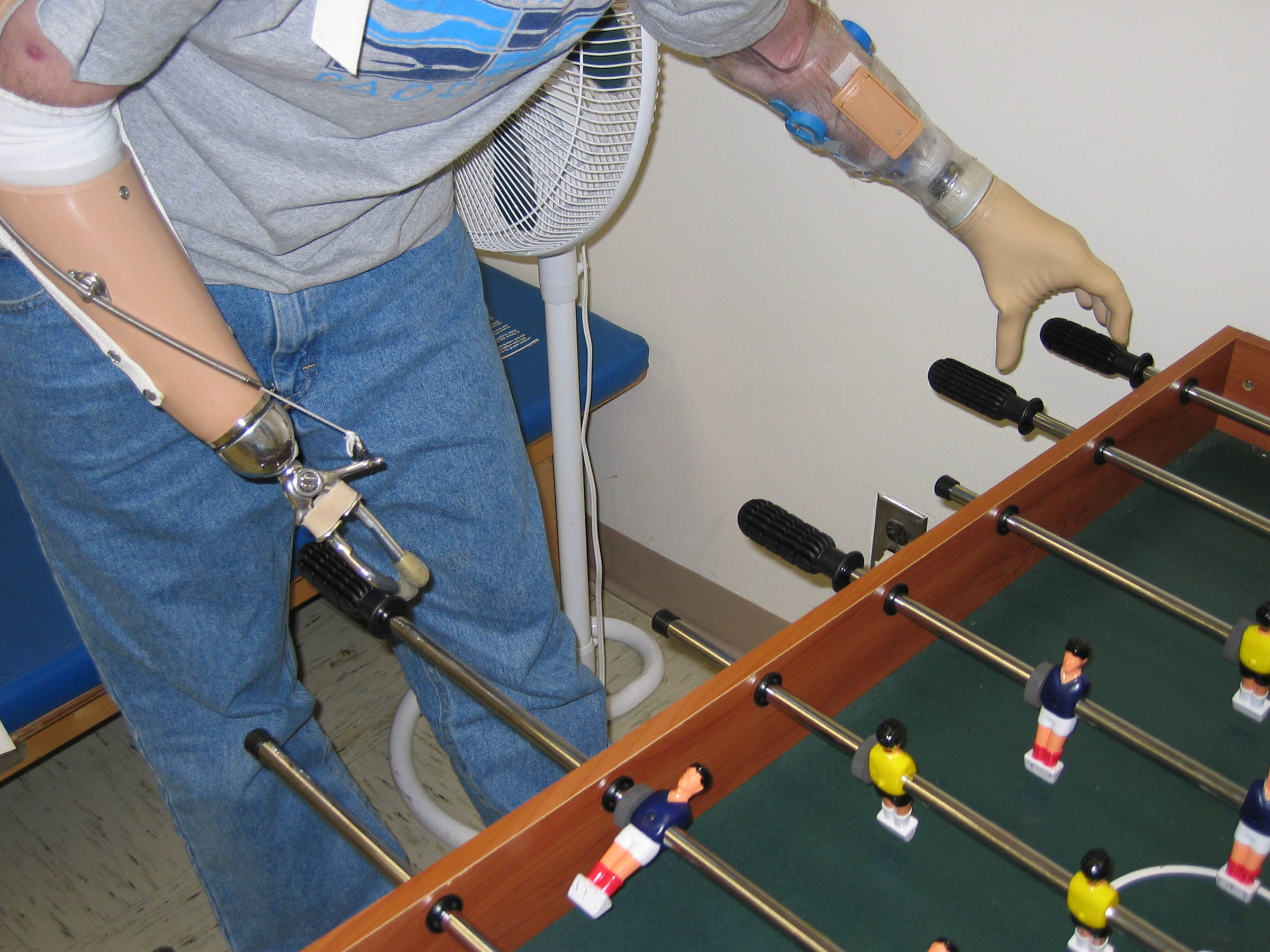|
Osseointegration
Osseointegration (from Latin " bony" and "to make whole") is the direct structural and functional connection between living bone and the surface of a load-bearing artificial implant ("load-bearing" as defined by Albrektsson et al. in 1981). A more recent definition (by Schroeder et al.) defines osseointegration as "functional ankylosis (bone adherence)", where new bone is laid down directly on the implant surface and the implant exhibits mechanical stability (i.e., resistance to destabilization by mechanical agitation or shear forces). Osseointegration has enhanced the science of medical bone and joint replacement techniques as well as dental implants and improving prosthetics for amputees. Definitions Osseointegration is also defined as: "the formation of a direct interface between an implant and bone, without intervening soft tissue". An osseointegrated implant is a type of implant defined as "an endosteal implant containing pores into which osteoblasts and supportin ... [...More Info...] [...Related Items...] OR: [Wikipedia] [Google] [Baidu] |
Dental Implant
A dental implant (also known as an endosseous implant or fixture) is a prosthesis that interfaces with the bone of the jaw or skull to support a dental prosthesis such as a crown (dentistry), crown, bridge (dentistry), bridge, dentures, denture, or facial prosthesis or to act as an Dental braces, orthodontic anchor. The basis for modern dental implants is a biological process called osseointegration, in which materials such as titanium or Zirconium dioxide, zirconia form an intimate bond to the bone. The implant fixture is first placed so that it is likely to osseointegrate, then a dental prosthetic is added. A variable amount of healing time is required for osseointegration before either the dental prosthetic (a tooth, bridge, or denture) is attached to the implant or an abutment (dentistry), abutment is placed which will hold a dental prosthetic or crown. Success or failure of implants depends primarily on the thickness and health of the bone and gingival tissues that surround ... [...More Info...] [...Related Items...] OR: [Wikipedia] [Google] [Baidu] |
Dental Implants
A dental implant (also known as an endosseous implant or fixture) is a prosthesis that interfaces with the bone of the jaw or skull to support a dental prosthesis such as a crown, bridge, denture, or facial prosthesis or to act as an orthodontic anchor. The basis for modern dental implants is a biological process called osseointegration, in which materials such as titanium or zirconia form an intimate bond to the bone. The implant fixture is first placed so that it is likely to osseointegrate, then a dental prosthetic is added. A variable amount of healing time is required for osseointegration before either the dental prosthetic (a tooth, bridge, or denture) is attached to the implant or an abutment is placed which will hold a dental prosthetic or crown. Success or failure of implants depends primarily on the thickness and health of the bone and gingival tissues that surround the implant, but also on the health of the person receiving the treatment and drugs which affect th ... [...More Info...] [...Related Items...] OR: [Wikipedia] [Google] [Baidu] |
Dental Implant
A dental implant (also known as an endosseous implant or fixture) is a prosthesis that interfaces with the bone of the jaw or skull to support a dental prosthesis such as a crown (dentistry), crown, bridge (dentistry), bridge, dentures, denture, or facial prosthesis or to act as an Dental braces, orthodontic anchor. The basis for modern dental implants is a biological process called osseointegration, in which materials such as titanium or Zirconium dioxide, zirconia form an intimate bond to the bone. The implant fixture is first placed so that it is likely to osseointegrate, then a dental prosthetic is added. A variable amount of healing time is required for osseointegration before either the dental prosthetic (a tooth, bridge, or denture) is attached to the implant or an abutment (dentistry), abutment is placed which will hold a dental prosthetic or crown. Success or failure of implants depends primarily on the thickness and health of the bone and gingival tissues that surround ... [...More Info...] [...Related Items...] OR: [Wikipedia] [Google] [Baidu] |
Munjed Al Muderis
Munjed Al Muderis (born 25 June 1972) is an Australian adjunct clinical professor in orthopaedic surgery, author and human rights activist. He has done pioneering work on Prosthesis, prosthetics, especially on titanium devices. Al Muderis was born in Iraq to a wealthy family and became a surgeon under the regime of Saddam Hussein. He was a medical student in Basra at the start of the Gulf War in August 1990. As a junior surgeon, he emigrated from Iraq to Australia. He travelled through Indonesia and Malaysia and reached Australia where he was kept in at an immigration detention centre near Derby, Western Australia. He was released after 10 months and carried on his career in medicine, eventually specialising in osseointegration surgery. Al Muderis wrote the book ''Walking Free'' on his experiences in Iraq, in the Immigration detention in Australia, Australian immigration detention system, and on his career in Australia. Early life Al Muderis was born under the regime of Sad ... [...More Info...] [...Related Items...] OR: [Wikipedia] [Google] [Baidu] |
Osseoincorporation
Osseoincorporation is the healing potential of bone onto an implant surface and into an implant structure. Three-dimensional, porous implantable materials used in the orthopedic and dental implant industries offer the potential for ingrowth as well as ongrowth or osseoincorporation. Comparison to osseointegration Conventional textured or coated implant surfaces are designed to achieve bone-to-implant contact, which is called ''ongrowth''. Per-Ingvar Brånemark defined this ongrowth phenomenon, osseointegration, as "the direct structural and functional connection between ordered, living bone and the surface of a load-carrying implant". In the case of dental implants, they osseointegrate. Porous implantable materials are designed for bone to grow not only onto the material but also into its pores, and in some cases interconnecting within the material’s structure, in a process called ''osseoincorporation''. Complications In some cases, the patient has periodontal defects (dama ... [...More Info...] [...Related Items...] OR: [Wikipedia] [Google] [Baidu] |
Per-Ingvar Brånemark
Per-Ingvar Brånemark (3 May 1929 – 30 December 2014) was a Swedish physician and researcher, known as the "father of modern dental implantology". The ''Brånemark Osseointegration Center'' (BOC), named after its founder, was founded in 1989 in Gothenburg, Sweden. Biography After studying at Lund University in Sweden, Brånemark became professor of Anatomy at University of Gothenburg in 1969. Brånemark has been awarded many prizes for his work, including the coveted Swedish Society of Medicine's Söderberg Prize in 1992—often referred to as the 'mini- Nobel'—and the Swedish Engineering Academy's equally prestigious medal for technical innovation. Brånemark has also been honored with the Harvard School of Dental Medicine Medal for his work on dental implants in the United States and holds more than 30 honorary positions throughout Europe and North America, including the Honorary Fellowship of the Royal Society of Medicine in the UK. In 2003, he received an honorary d ... [...More Info...] [...Related Items...] OR: [Wikipedia] [Google] [Baidu] |
Prosthesis
In medicine, a prosthesis (: prostheses; from ), or a prosthetic implant, is an artificial device that replaces a missing body part, which may be lost through physical trauma, disease, or a condition present at birth (Congenital, congenital disorder). Prostheses may restore the normal functions of the missing body part, or may perform a cosmetic function. A person who has undergone an amputation is sometimes referred to as an Amputation, amputee, however, this term may be offensive. Rehabilitation for someone with an amputation is primarily coordinated by a Physical medicine and rehabilitation, physiatrist as part of an inter-disciplinary team consisting of physiatrists, prosthetists, nurses, physical therapists, and occupational therapists. Prostheses can be created by hand or with computer-aided design (CAD), a software interface that helps creators design and analyze the creation with computer-generated Technical drawing, 2-D and 3D computer graphics, 3-D graphics as well as an ... [...More Info...] [...Related Items...] OR: [Wikipedia] [Google] [Baidu] |
Titanium
Titanium is a chemical element; it has symbol Ti and atomic number 22. Found in nature only as an oxide, it can be reduced to produce a lustrous transition metal with a silver color, low density, and high strength, resistant to corrosion in sea water, aqua regia, and chlorine. Titanium was discovered in Cornwall, Great Britain, by William Gregor in 1791 and was named by Martin Heinrich Klaproth after the Titans of Greek mythology. The element occurs within a number of minerals, principally rutile and ilmenite, which are widely distributed in the Earth's crust and lithosphere; it is found in almost all living things, as well as bodies of water, rocks, and soils. The metal is extracted from its principal mineral ores by the Kroll and Hunter processes. The most common compound, titanium dioxide (TiO2), is a popular photocatalyst and is used in the manufacture of white pigments. Other compounds include titanium tetrachloride (TiCl4), a component of smoke screens and cata ... [...More Info...] [...Related Items...] OR: [Wikipedia] [Google] [Baidu] |
Replacement Joint
Joint replacement is a procedure of orthopedic surgery known also as arthroplasty, in which an arthritic or dysfunctional joint surface is replaced with an orthopedic prosthesis. Joint replacement is considered as a treatment when severe joint pain or dysfunction is not alleviated by less-invasive therapies. Joint replacement surgery is often indicated from various joint diseases, including osteoarthritis and rheumatoid arthritis. Joint replacement has become more common, mostly with knee and hip replacements. About 773,000 Americans had a hip or knee replaced in 2009.Joint Replacement Surgery and You. (April, 2009) In ''Arthritis, Musculoskeletal and Skin Disease online''. Retrieved from http://www.niams.nih.gov/#. Uses Shoulder For shoulder replacement, there are a few major approaches to access the shoulder joint. The first is the deltopectoral approach, which saves the deltoid, but requires the supraspinatus to be cut. The second is the transdeltoid approach, which provi ... [...More Info...] [...Related Items...] OR: [Wikipedia] [Google] [Baidu] |
Implant (medicine)
An implant is a medical device manufactured to replace a missing biological structure, support a damaged biological structure, or enhance an existing biological structure. For example, an implant may be a rod, used to strengthen weak bones. Medical implants are human-made devices, in contrast to a transplant, which is a transplanted biomedical tissue. The surface of implants that contact the body might be made of a biomedical material such as titanium, silicone, or apatite depending on what is the most functional. In 2018, for example, American Elements developed a nickel alloy powder for 3D printing robust, long-lasting, and biocompatible medical implants. In some cases implants contain electronics, e.g. artificial pacemaker and cochlear implants. Some implants are bioactive, such as subcutaneous drug delivery devices in the form of implantable pills or drug-eluting stents. Applications Implants can roughly be categorized into groups by application: Sensory and neu ... [...More Info...] [...Related Items...] OR: [Wikipedia] [Google] [Baidu] |






